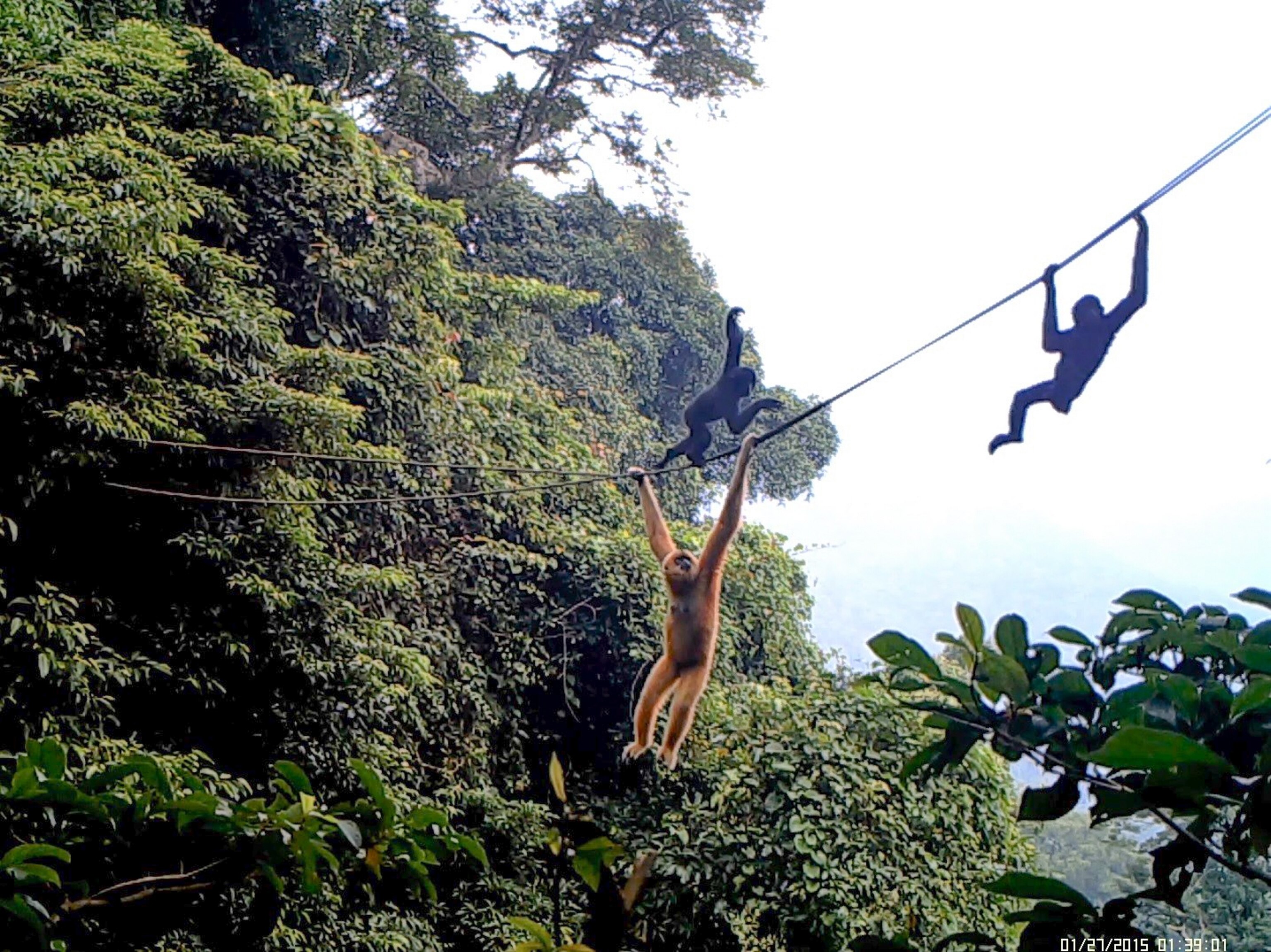The world’s most critically endangered primate, the Hainan gibbon, is barely surviving. Only 30 remain on the planet, all restricted to a single patch of forest on China’s Hainan Island.
Because the species is so precarious, each gibbon’s survival is vital, says Bosco Pui Lok Chan, who manages the Hainan Gibbon Conservation Project, run by the Kadoorie Farm and Botanic Garden, in Hong Kong.
At home in the canopy, these acrobats use their long arms to swing from tree to tree, enabling them to easily gather forest fruits. They’re fearful of moving on the ground, which is why decades of forest fragmentation from logging and agricultural activities has isolated groups from one another, causing them to slowly die out. (Read more about threats to Hainan gibbons.)
So after Typhoon Rammasun caused a massive landslide in Hainan in May 2015, destroying more of the gibbons’ habitat and opening gaps that exacerbated previous tree losses, Chan and colleagues took emergency action.
They employed professional tree climbers to install one artificial rope bridge over the damaged section of forest—the first time such an intervention has been attempted with the species. The bridge consisted of two mountaineering-grade ropes strung over a 50-foot-wide gully between trees. They also installed motion-activated camera traps near the bridge.

A new study, published today in Scientific Reports brings welcome news: Gibbons are using the bridge, suggesting that this strategy can be used elsewhere in the forest to help the animals move around, mingle, and find mates, co-author Chan says. At first, the gibbons ignored the bridge, so after waiting 176 days, Chan says, “it was a pleasant relief when the gibbons finally used it.”
Rope techniques
Chan was also surprised by what the camera trap photos revealed. (See our favorite candid photos of wild animals—taken by camera trap.)
Rather than swinging their arms along the ropes, as they do to grab tree branches, many of the gibbons began what Chan calls “handrailing.” They walked along one rope while holding the other above their heads for balance, similar to the way a person would use a handrail for stability.
Females and youngsters seemed most willing to use the bridge, possibly because adult males are strong enough to leap over the gap, Chan speculates. It’s also possible that adult females, which may be pregnant or carrying an infant, judge such a jump too risky.
“There are many different designs of canopy bridges used all over the world, but this one is particularly cool because it is simple, low cost, and well adapted to this species,” says Tremaine Gregory, a conservation biologist at the Smithsonian Conservation Biology Institute’s Center for Conservation and Sustainability, in Washington, D.C.
Short-term fix
An estimated 2,000 Hainan gibbons remained in the wild during the 1950s, but by the 1970s, habitat loss and hunting had slashed their number to 10 individuals. In a drastic effort to save the species, the Hainan Gibbon Conservation Project monitored and researched those last holdouts, patrolled their territories for hunters, and planted trees. With the three-fold increase in their numbers today, the future for the Hainan gibbons is still precarious. (Attempts to breed the species in captivity have failed.)
“As we chop up the world into smaller and smaller piece with roads and other infrastructure, it’s important to think about solutions for maintaining connectivity between fragments of habitat,” says Gregory, who wasn’t involved in the study. She adds the canopy bridge could inspire other conservationists working to protect rare arboreal animals. (Read about a new species of gibbon discovered in China.)
Chan agrees but cautions that rope bridges are only a short-term fix. “Finding ways to restore natural forest corridors should be a priority,” says Chan, who has launched a reforestation project to plant fast-growing native trees beneath the rope bridge. “That is the most sustainable and long-term solution for conservation.”





